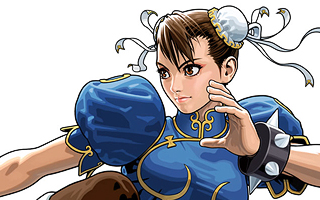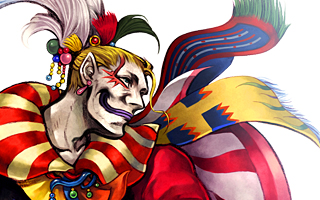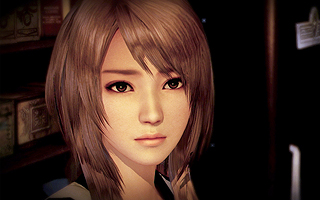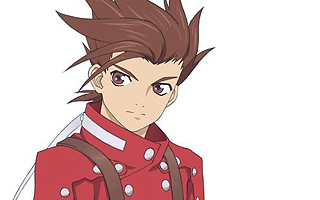Small Talk
Top 10 Best Mini-Games of All Time!
For this list, we’re looking for examples of great and iconic mini-games. Mini-games tend to be more simplistic than the larger games they are found in, and they almost always feature different gameplay elements. The best mini-games could stand on their own merits, and it would be easy to envision them as full-fledged titles. (In fact, there are numerous examples of mini-games that evolved into proper, stand-alone games.) We’re going to be pretty generous with our definition of mini-game for the purpose of this list, but we’ve decided not to include titles like Mario Party that are comprised entirely of mini-games. We’re also going to avoid mentioning any ROM dumps of existing games, so don’t expect to see any of the NES classics from Animal Crossing to show up on this countdown.
10
Fishing
The Legend of Zelda: Ocarina of Time

There’s a lot of things to see and do in Ocarina of Time. When you’re not too busy traveling through time or exploring dungeons, one of the best ways to pass the time is by visiting the Lake Hylia fishing hole. If you manage to snag a large enough fish, you might be rewarded with rupees or a piece of heart, but it would be a worthwhile activity even if you couldn’t earn rewards. The fish are clearly visible in the pond, so you can usually choose which one you want to go after. The conditions of the WATER change depending on what time of day it is, and you’ll probably need to experiment a little before you find an ideal spot to cast your line. It’s a lot of fun once you get the hang of it, and it’s probably the most relaxing part of the game. Just be careful not to scare the fish! The fishing mechanics were more developed in Twilight Princess, but Ocarina of Time felt more inventive. The fishing mini-game used the Nintendo 64 analog stick in creative ways, and it made excellent use of the Rumble Pak as well. Hyrule would be much better off if more people spent their time fishing.
9
Bizarre Jelly 5
No More Heroes 2

In order to earn enough money to join ranked assassin battles in No More Heroes 2, Travis Touchdown has to take on various side jobs. These jobs play out like classic 8-bit arcade games, and they include everything from a racing game to a Pipedream-inspired puzzle game. It wouldn’t seem fair to include any of these jobs on this list, since they play a significant role in the overall plot of No More Heroes 2. Bizarre Jelly 5, in contrast, is entirely optional and completely separate from the main game. This mini-game is an intense, vertically-scrolling shoot ’em up featuring a cast of plucky Japanese schoolgirls with uncanny magical abilities. The mini-game draws obvious inspiration from bullet curtain shooters like Touhou, and the similarities can even be seen in the enemy patterns. The premise is intentionally absurd, and the animated video that accompanies it is even more ridiculous. Bizarre Jelly 5 is filled with fanservice and shameless panty shots, and it’s exactly the type of thing I’d expect an otaku like Travis to gravitate toward. In that sense, the mini-game provides insight into who Travis is as a person.
8
Rapunzel
Catherine

Rapunzel is a virtual arcade game that mimics the gameplay of Catherine itself. The cabinet can be found in the bar where Vincent Brooks and his friends hang out, and its 128 levels use the same mechanics as the game’s main “nightmare” stages do. Like the fairy tale its named after, the premise of Rapunzel involves a brave prince who is trying to rescue a young maiden named Rapunzel from a tower. Assuming the role of the prince, the object of the game is to push and pull various blocks in an effort to scale to the top of the isometric structure. You’re essentially building makeshift staircases for yourself, and you’ll need to plan ahead if you want to succeed. Rapunzel is a completely optional mini-game, but you’ll be given three credits each night if you want to try your hand at it. Its graphics are inspired by 1980s arcade titles, but the game is more complex than it looks. It actually requires more strategy than the main game in some ways, since you are limited in the number of moves you can make.
7
Hunting
The Oregon Trail

The earliest versions of The Oregon Trail were text-based strategy games that were played with teleprinter computer terminals. In order to hunt in these versions, players would be prompted to type words like “BANG” or “POW” as quickly (and accurately) as possible. More food would gathered in accordance to how fast the word was typed. When the game was adapted for the Apple II in 1978, the hunting mini-game was replaced with a graphical version. In this version, deer would move across the screen and the player would simply press a key to fire at it. The hunting mechanics were expanded upon even more in the 1985 release. This time around, the player could move his character freely around the screen and had the ability to fire in eight different directions. Various animals would emerge during your hunting expeditions – including rabbits, deer, and bears, among others – and you could potentially take 100 pounds of meat back to your wagon after each trip. Your success in The Oregon Trail was largely left to chance, but the hunting mini-game made you feel like you had some level of control over your destiny. Hundreds of millions of students played The Oregon Trail in elementary school, and every single one of them will agree that shooting bison is more fun than dying of dysentery.
6
Forklift Racing
Shenmue

Shenmue is one of the first examples of a true open-world sandbox game, and it deserves tremendous credit for using a wide variety of gameplay styles. Nowadays, its expected for open-world games to be loaded with mini-games, but Shenmue is one of the titles that set these expectations in the first place. There were many ways to occupy your time outside of the main story, and these elements ultimately added a sense of realism to the game. Ryo could take a trip to the local arcade, play a round of pool, or spend his time looking for sailors. It was fun to absorb all the mundane details of daily life, but it’s fair to say that some of the mini-games were more exciting than others. After getting a part-time job at the docks, for example, Ryo could partake in forklift races to prepare for the day ahead. The three-lap races took Ryo through the New Warehouse District and back, and they were more exciting than his actual job. You weren’t required to do well in the races, but you could win yourself some nifty capsule toys if you placed high enough! Ryo could also race his forklift in Sonic & Sega All-Stars Racing, just in case you didn’t get your fill while playing Shenmue.
5
Battle Mode
Super Mario Bros. 3

Super Mario Bros. 3 was a huge step forward for the franchise in many ways, but it also brought the series back to its roots. A lot can be said about the game’s stellar level designs and inventive power-ups, and the two-player mini-game is also worthy of praise. Super Mario Bros. 3 can be played by a single person, or two players can take turns accessing the levels. If you are so inclined, you can challenge the second player on the world map and attempt to steal their turn by besting them in a battle mode stage inspired by the original Mario Bros. arcade game. (Incidentally, this is the only mode in the game that allows two people to play simultaneously.) The goal of the battle mode is to collect coins from enemies and knock your opponent into harm’s way, and the winner will ultimately be given control of the board when the game goes back to the map screen. The battle mode stage has the same look and feel as the 1983 arcade game, but the graphics are more refined and the controls are more responsive. I actually prefer it to the original Mario Bros. in many ways. If nothing else, the battle mode deserves credit for adding an element of drama to the “alternating turns” approach that many two-player games employed.
4
Gwent
The Witcher 3

Gwent is a turn-based card game that was mentioned in The Witcher novels before a playable version was included as part of The Witcher 3: Wild Hunt. The fast-paced game is designed for two players, and it could be likened to collectible card games like Magic: The Gathering. Each player uses their own customized deck of cards representing a specific faction, and each deck offers a unique combat style. Certain cards are useful for attacking, while others will boost your stats or grant special abilities. There are countless paths to victory, and it’s a lot of fun to collect cards and build more effective decks. The Witcher 3 gives players an expansive world to explore, but it’s easy to lose countless hours playing Gwent against the local innkeep. The mini-game was popular enough to warrant a separate release in 2018. The stand-alone version expanded upon the core mechanics, but the original version of Gwent had incredible depth for a supposed mini-game. I hope you like collectible card games, ’cause you’re going to see more of them on this list!
3
Tetra Master
Final Fantasy IX

Tetra Master is a card game that’s played between two players on a four-by-four grid of blank spaces. When a card is placed on the grid, it can potentially attack adjacent cards. The cards each have their own values representing their power, battle class, and defense stats. The cards also have arrows to indicate which direction they are able to attack. If a player defeats an adjacent card, they can potentially set off a chain reaction and capture additional cards depending on which direction the arrows on the defeated card were pointing. There’s an element of randomness to the game and it’s not always easy to anticipate how your opponent is going to play, but you can usually gain an advantage by selecting useful cards beforehand. There are 100 unique cards in the game, and many of them are only available during side quests. You’ll usually have multiple opportunities to find each card, however, and they have no practical use outside of Tetra Master itself. The game is completely optional for the most part, but Tetra Master provides some relief from the main story and gives you a new way to interact with other characters. It was compelling enough to warrant its own release through Square’s PlayOnline service in 2002, and a physical version of Tetra Master was even released in Europe.
2
Geometry Wars
Project Gotham Racing 2

During the development of Project Gotham Racing, the team at Bizarre Creations made a simple, arcade-style shooter as a way of testing the Xbox controller. The control scheme was inspired by Robotron: 2048, and it made use of both analog sticks. Basically, the left stick was used to move your ship, while the right stick could independently fire in any direction. The goal was simply to survive for as long as possible while destroying an ever-increasing swarm of enemies. Bizarre decided to include the game in Project Gotham 2, and this is where Geometry Wars was born. Geometry Wars could be accessed from within the in-game garage, and it was intended to be a simple diversion from the main game. Surprisingly, the game became popular enough for Bizarre to release a stand-alone version on the Xbox 360. Geometry Wars: Retro Evolved was a killer app on Xbox Live Arcade, and it was one of the best launch games available on the Xbox 360 in any capacity. It’s hard to believe that Geometry Wars was ever considered a mere Easter egg.
1
Triple Triad
Final Fantasy VIII

I know you’re probably getting tired of card games by now, but Triple Triad is still the gold standard as far as I’m concerned. The game involves two players facing off against each other on a 3×3 grid. Each player has five cards at their disposal, and the object is to capture the opponent’s cards. There are values associated with the four sides of each card, and you can capture adjacent cards if the bordering number is higher than the value on your opponent’s card. Cards can also have elemental alignments that affect the gameplay, and there are different rule variations from one region to the next. Triple Triad was intended to be a mere diversion from the main story, but it’s integrated into the game in a significant way since the cards can be used to obtain rare items. Enemies will drop cards throughout the adventure, and some of the side quests exist only for the purpose of obtaining unique cards. I had high expectations heading into Final Fantasy VIII, but Triple Triad was the only part of the game that I truly enjoyed. A version of Triple Triad can be played in Final Fantasy XIV: A Realm Reborn, a stand-alone smartphone app was released in 2015, and a physical version was even produced for the Japanese market. I’m probably opening up a can of worms by saying this, but I think Triple Triad is a better game than Final Fantasy VIII.





Do you agree with this list? Let us know what you think by leaving a comment below. Your opinion matters!